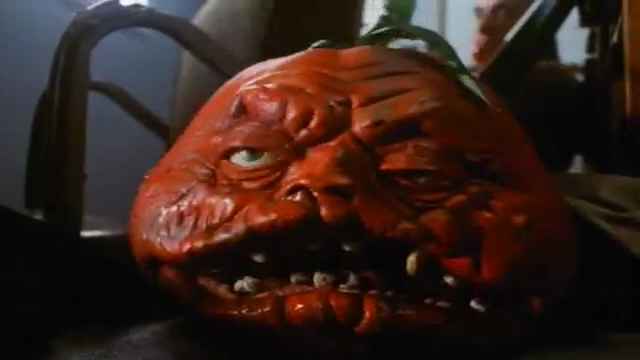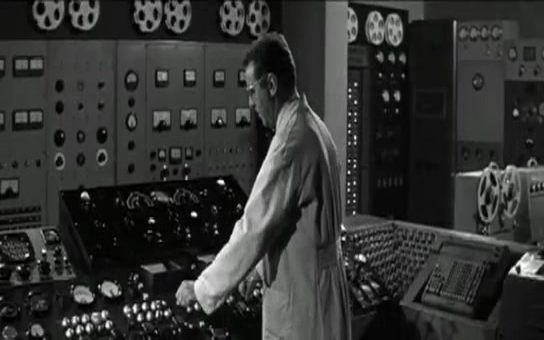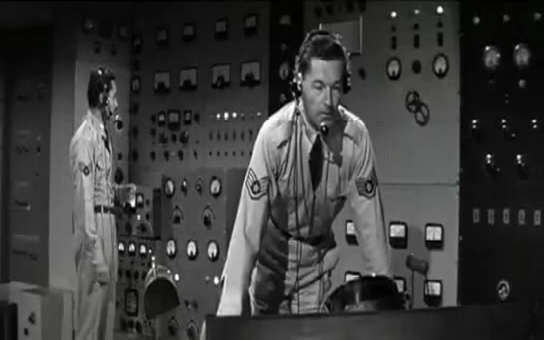-
#339 – Killer Tomatoes Eat France (1991)
Killer Tomatoes Eat France (1991)
Film review #339
dir. John De Bello
SYNOPSIS: Professor Gangreen has escaped from prison and intends to enact a new plan to take over the world using his killer tomatoes. This time he intends to fulfil an ancient French prophecy to install his assistant Igor to the throne of France. An American backpacker arrives in France and stumbles upon Gangreen’s sinister plan, and with Marie, a local French villager, and FT (Fuzzy Tomato), a “good” tomato, they must work together to stop Gangreen before he fulfils the ancient prophecy…
THOUGHT/ANALYSIS: Killer Tomatoes Eat France is a 1991 film and the fourthin the Killer Tomatoes film series. Let’s start off with the title of the film: it wouldn’t sound halfway believable if there wasn’t already a well-established franchise consisting of four films, a cartoon series and video games that constantly parodies the b-movie monster genre. The film right from the outset presents the viewer with some silly credits that while not wholly original, might get a small chuckle or two. This is accompanied by a very dramatic and orchestral arrangement of the “Attack of the Killer Tomatoes” song, which is massively overproduced for a b-movie project like this, but that’s definitely part of its charm. I think this was also used in the previous films too, but it’s been a while since I’ve seen them. The film starts properly with Professor Gangreen, the creator of the killer tomatoes, about to face execution in France, when he is rescued by his assistant Igor. Gangreen then hatches yet another plan to take over the world using his killer tomatoes, intending to fulfil an ancient prophecy of the return of a French King, and having Igor be that King. The film’s story is rather simple, with plot points parodying other stories, so it’s easy to follow. It’s obviously not meant to be an epic tale, but pokes fun at all of the tropes that it incorporates into its story.
Meanwhile, an American backpacker is travelling through France when he meets a young French woman named Marie. She learns he is an actor, although she doesn’t learn that he is a b-movie actor…hence this film, and he introduces himself as Michael J. Fox to try and impress her. I’m not sure if Michael is supposed to be his actual name, because it’s never really revealed, so we’ll just go with it. The country of France is probably the butt of most of the jokes in this film, with it portraying rural France as living in the 1800s, and the various stereotypes of the French, from eating snails to the various traits made popular by actor Jerry Lewis. It is a completely over-the-top characterisation that may feel a little old fashioned nowadays, but provides some funny slapstick moments, such as the French army facing off against the tomatoes by launching baguettes at them. There’s also the plot element concerning the prophecy of a king returning to the throne of France, and the film depicting the need of France to have a monarch again after they became a republic. Probably not the best depiction of French values, but there is a note in the credits that basically says not to take it too seriously, and the film itself reflects that rather well. The film basically continues the world established in the previous films, where tomatoes were banned worldwide and everyone uses rather gross alternatives for tomatoes in their food. France is established as the only place in the world where tomatoes and humans live alongside each other in harmony. Killer Tomatoes Eat France does distinguish itself from the others by having sentient vegetables that weren’t created by Gangreen, and also giving some of the tomatoes speech, which they never did previously. It is in contradiction with the world established by the previous films, but it’s a world with killer tomatoes in it, and it’s not a film series that focuses on consistent world-building.
The rest of the characters include the return of Professor Gangreen and his assistant Igor from the previous films, who created the killer tomatoes. They get a lot of focus in the film and their general incompetence sets up a lot of the jokes. There is also F.T. (Fuzzy Tomato), the only ‘good’ tomato that Professor Gangreen created, who is performing a concert at the Louvre and helps to stop Gangreen and his scheme. There’s also Louis XVII (who says he always wondered why his last name was “17″), who learns he is the true King of France, and who Michael and Marie must restore to the throne in place of Igor. Gangreen and Igor are also helped by three tomato minions (Zoltan, Kethuck and Viper), who are based on characters from the cartoon series. It’s a packed cast who all fulfil specific roles, so there’s not much to complain about in that regard.
The whole film feels a lot more child-friendly than the previous films: maybe because it was riding on the back of the cartoon series, which was mildly successful. A lot of the jokes lack any teeth and would probably appeal to a child’s sense of humour, but are devoid of much more substance for adults to enjoy (although Gangreen being marches to the guillotine at the beginning is a little dark). A lot of the jokes break the fourth-wall and extend onto the set of the film, and while the previous films did some of this, it does happen a bit too much here. The best gags are the more subtle ones, such as during the war scene, where green army men toy figures are used to create a mock special effect of a real army charging across the battlefield, only for the film to cut to an actual field and life-sized green army men are actually stood in the field, this gaga also continues with toy tanks, and the way the film switches between toys and real-life is well done. Other visual gags such as the French soldiers wielding baguettes as weapons and Gangreen deploying banana skins and marbles on the tower stairs that Michael is trying to climb to rescue Marie. The film doesn’t have a huge budget, but still manages to pull off some big scenes, such as the battle mimicking the trenches of the first world war, and the car chase through the streets of Paris. Killer Tomatoes Eat France doesn’t add anything new to the world of killer vegetables, instead just providing more of the same as we have seen before. It changes things up with setting it in a caricature of France that is out-of-date and overly cartoonish, but nevertheless provides a few funny moments. Some of the humour, while not overly original, keeps the film afloat and form being a boring experience. The trouble is the first film started out as a parody of b-movie horror films, and with the fourth film there’s not too much left to parody (hence why there’s more focus in parodying France). The b-movie genre by 1991 was also long gone, and so the film exists in this non-space where it is referencing things which aren’t really relevant. However as I mentioned at the beginning, there’s something about this series that kept it going, and the film, for better or worse, manages to continue this bizarre franchise.
-
#10 – Kronos (1957)
Kronos (1957)
Film review #10
dir. Kurt Neumann
An old B-movie sci-fi from the 1950s. Kronos is not very well known, but has some interesting aspects to it.
When a strange asteroid is spotted in space, two scientists at Lab Central try to work out it’s origins. When it makes unnatural movements and deviations from it’s course, Dr Leslie Gaskell and Dr. Arnold Kulver suspect there may be something more to it. At the same time, a strange spark of light has taken possession of the Labs director: Dr. Hubbard Elliot. The asteroid continues on a collision course with Earth and panic spreads across North America, fearing it will crash onto a city. These fears are unfounded, when it crashes into the Pacific Ocean, near Mexico.
The scientists, along with Vera Hunter go to Mexico to investigate, and while they’re there, a strange construct appears. This “monster” (named Kronos by Gaskell, after the monster of Greek mythology), proceeds to march upon a power station to absorb it’s energy. Dr. Elliot is fighting the influence of the alien intelligence intermittently, and after Kronos absorbs the energy of a H-bomb, he regains control of himself to reveal the purpose of Kronos: To drain the planet of all it’s energy. In a race against time to stop Kronos from reaching the atomic weapons facility and its nearly unlimited energy, Leslie and Arnold engineer a plan to reverse the charge of Kronos’s energy convertors, effectively destroying itself.
The plot may seem a bit confusing, but it addresses issues such as energy consumption before many other films or TV series did. The science of the movie moves between factual and fictional rather seamlessly, making it hard to pinpoint where the real end science ends, and the fictional science begins. This, however, is probably a good thing for movies such as this, which are released onto a general public that really isn’t that clued in on science, namely the American movie-goers of the 1950s.
On that subject, the movie is very much an American movie. Movie staples such as the spinning newspapers aid the transition of science into the cinema mainstream. A sound move perhaps, since movies in the same genre from the 50’s, such as The Day The Earth Stood Still don’t rely much on the technical science, and generally put an alien or scientific spin on common human dramas, which is not the case for Kronos.
The main characters are very much the same as every other movie character at that time in America, with a little cowboy attitude, and the relationship between Leslie and Vera, which seems very normal, talking about going to the movie themselves, and frolicking on the beach. Perhaps this humanises the notion of what sort of person a scientist is, as their perception at this time would be of someone who develops weapons of mass destruction, rather than someone who furthers knowledge and understanding. The character of Dr. Arnold Kulver probably fits the traditional scientist model more so, with his glasses, and bow tie, and how he seems to have more of a relationship with the computer SUSIE than an actual woman. He plays more of a “sidekick” role, which fits with a lot of American drama at the time, putting the role of the “brainbox” as the assistant, and never as the star. Though Leslie is a scientist too, he rarely plays to the traditional convention of one like Arnold does.
Apparently, the entire movie was filmed in just two weeks. Which seems rather quick even for the 1950s. There is a lot of stock footage, and there are only a few actual locations/sets used, and the special effects are quite underwhelming. Lab Central has a very postmodern look to it, with its dome lighting and physic models, and a rather impressive looking computer called SUSIE (short for Synchro Unifying Sinometric Integrating Equitensor…sounds either very complex or just nonsense depending on your perspective). This computer may look rather grand and complex, but its function could probably be accomplished now using a computer about a tenth of its size. Back when it was produced though, when people had no concept of personal computers, this is what computers would have been recognised as: Large sets of blinking lights and switches that occupy entire rooms.
There’s a small religious reference in this movie. When the scientists go to Mexico, they stay with a man who (though he speaks entirely Mexican), is clearly religious, with a cross on the wall, and who kisses the cross on his neck when Kronos appears. It seems science-fiction movies from this era always find a way to shoehorn religion in their movies somewhere. Like The Day The Earth Stood Still as well, it addresses the danger of atomic weapons, though not in their destructive power, but how they feed Kronos to make it more powerful.
So while nothing particularly special in terms of production, Kronos offers a view of the perception of science in the 1950s. The plot is riddled with scientific jargon, and the plot requires some deduction since it isn’t explained until very late on. A disaster movie that is powered by, and eventually stopped by science.



















